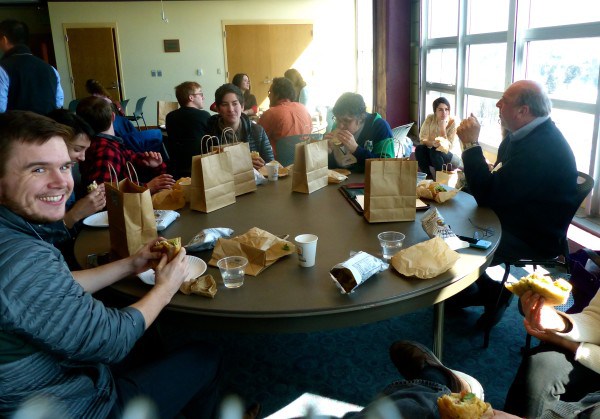
Portland Poised as Leader in Improving Local Food Economy
PORTLAND, Maine — A sustainable, healthy food system cannot be built overnight. To get local produce to your plate, a host of hands, hearts and minds has to work in harmony.
Just as it takes a village to raise a child, it takes a city to set the agenda for the state’s “new food economy.”
An economics professor at the University of Southern Maine led a daylong conference Monday titled “Scaling up to Local,” which examined ways Maine farmers, fresh-food purveyors, politicians and institutions can work together to strengthen this system.
March 18, 2015 | Source: Bangor Daily News | by Kathleen Pierce
PORTLAND, Maine — A sustainable, healthy food system cannot be built overnight. To get local produce to your plate, a host of hands, hearts and minds has to work in harmony.
Just as it takes a village to raise a child, it takes a city to set the agenda for the state’s “new food economy.”
An economics professor at the University of Southern Maine led a daylong conference Monday titled “Scaling up to Local,” which examined ways Maine farmers, fresh-food purveyors, politicians and institutions can work together to strengthen this system.
“The community needs to know there is energy around the mayor’s food initiative,” said Michael Hillard, the economics professor who pulled together a panel of sustainable-food and labor experts, nonprofits and Portland’s Mayor Michael Brennan to highlight the issue.
To Hillard, Brennan’s food initiative, which aims for public schools, universities and hospitals to source up to 50 percent of their food locally, is “creating an updraft around this,” adding that such a bold plan will “create jobs and better food.”
In his January State of the City address, the mayor focused on local fish, singling out ground fish such as pollock and dogfish as a way to help the state’s commercial fisheries and tighten the buy-local movement. He wants to make eating local fish a priority in schools and large, local institutions.
As keynote speaker at the conference, Brennan set a can-do tone.
He said the key is to get more public school students to buy their lunch. “If 15 percent more students bought their lunch, that would give us the money to purchase more local food,” said Brennan.
Serving cafeteria meals that are “fresh and not processed” would cost the school system up to $500,000 if that percentage is not reached, Brennan said, adding that local producers “don’t have the same scale as Monsanto,” the agricultural giant.
